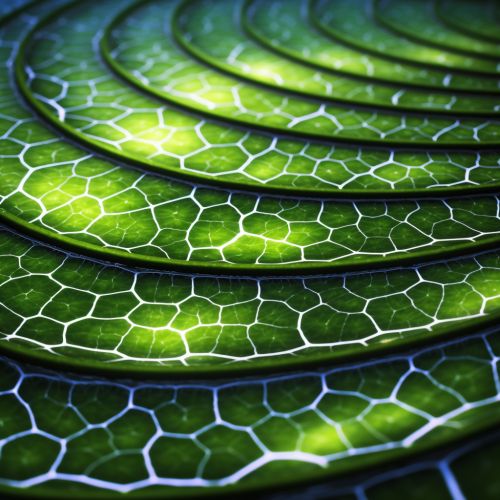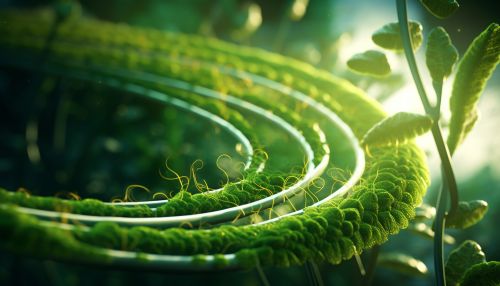Calvin Cycle
Overview
The Calvin Cycle, also known as the Calvin-Benson-Benson cycle or the light-independent reactions, is a series of biochemical reactions that take place in the stroma of chloroplasts in photosynthetic organisms. It is named after Melvin Calvin who used a radioactive isotope of carbon to trace the reactions.


Process
The Calvin Cycle is a three-stage process: carbon fixation, reduction, and regeneration of the starting molecule. Each stage occurs in a specific area of the chloroplast and involves different biochemical reactions.
Carbon Fixation
The first stage of the Calvin Cycle is carbon fixation. In this stage, carbon dioxide from the atmosphere is incorporated into an organic molecule, a process called carboxylation. This reaction is catalyzed by the enzyme RuBisCO, which combines a molecule of carbon dioxide with a five-carbon sugar called ribulose 1,5-bisphosphate (RuBP).
Reduction
The second stage of the Calvin Cycle is reduction. The six-carbon compound formed in the carbon fixation stage is unstable and immediately breaks down into two molecules of 3-phosphoglycerate (3-PGA). These molecules are then phosphorylated by ATP and reduced by NADPH to form glyceraldehyde 3-phosphate (G3P). This is the same three-carbon compound formed in glycolysis in the cytoplasm.
Regeneration
The third stage of the Calvin Cycle is the regeneration of RuBP. This is a complex process that requires most of the G3P produced in the reduction stage. The remaining G3P leaves the cycle and is used to make glucose and other organic molecules.
Significance
The Calvin Cycle is a critical component of photosynthesis, the process by which plants, algae, and some bacteria convert light energy, usually from the sun, into chemical energy in the form of glucose. This glucose can then be used as a source of energy for cellular respiration or as a building block for other organic molecules.
Regulation
The Calvin Cycle is regulated at several levels. The activity of RuBisCO, the enzyme that catalyzes the first step of the cycle, is influenced by several factors, including the concentration of carbon dioxide and the pH of the stroma. The cycle is also regulated by light, which provides the ATP and NADPH used in the cycle, and by the availability of the substrates for the cycle.
